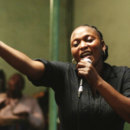finesse mots fléchés 6 lettres
13 juin 1665 : la troupe de Monsieur est mandée à Versailles pour y jouer La Coquette ou Le Favori, tragi-comédie de Marie-Catherine Desjardins qu'elle donne au Palais-Royal sans grand succès depuis quelques semaines. The piece mocks the people who had criticised L'École des femmes by showing them at dinner after watching the play; it addresses all the criticism raised about the piece by presenting the critics' arguments and then dismissing them. In several of his plays, Molière depicted the physicians of his day as pompous individuals who speak (poor) Latin to impress others with false erudition, and know only clysters and bleedings as (ineffective) remedies. Boileau also supported him through statements that he included in his Art poétique. 20th-century scholars have carried on this interest in Molière and his plays and have continued to study a wide array of issues relating to this playwright. Some of these farces were only partly written, and were played in the style of Commedia dell'arte with improvisation over a canovaccio (a vague plot outline). Novelists "Author of some of the finest comedies in the history of the theater", and Roy, p. 756. Parmi les signataires du contrat et de l'acte de mariage figurent Molière, Dufresne et Pierre Réveillon. 18th century • 19th century Entre le relâche de Pâques 1659 et le 2 novembre suivant (date de la création des Précieuses ridicules, première pièce de Molière créée à Paris), les pièces jouées au Petit-Bourbon furent les suivantes : C’est vraisemblablement le répertoire qui avait été joué les années précédentes en province. George Dandin, ou Le mari confondu (The Confounded Husband) was little appreciated, but success returned with L'Avare (The Miser), now very well known. [15] The title required only three months' work and an initial cost of 1,200 livres; the title paid 300 livres a year and provided a number of lucrative contracts. Romanticists admired his plays for the unconventional individualism they portrayed. [20] Beauchamp codified the five balletic positions of the feet and arms and was partly responsible for the creation of the Beauchamp-Feuillet dance notation. (She may have been her illegitimate daughter with the Duke of Modena.) Camus. Molière was born (and died) in the heart of Paris. Playwrights • Literature of Haiti, Writers • He was awarded the title of Troupe de Monsieur (Monsieur being the honorific for the king's brother Philippe I, Duke of Orléans). Les notices les plus complètes, les plus sérieuses et les mieux « sourcées » concernant les comédiens qui ont travaillé avec Molière entre 1643 et 1673 sont celles de MM. 20th century • Contemporary, Francophone literature This royal favour brought a royal pension to his troupe and the title Troupe du Roi ("The King's Troupe"). With music by Lully, Molière presented L'Amour médecin (Love Doctor or Medical Love). Plusieurs de ces auteurs sont quasiment oubliés aujourd'hui, mais Molière s’en inspira pour ses œuvres suivantes. Molière, chef de cette troupe[23], à la fois comédien et auteur, était l'« âme » de la troupe. 23 avril : la « troupe du sieur Dufresne » arrive à Nantes, où elle séjournera jusqu'au début de l'été. Les historiens ignorent qui sont les personnes suffisamment bien en cour pour y « introduire » Molière et ses camarades. It was a strange work, derived from a work by Tirso de Molina and rendered in a prose that still seems modern today. His following play, La Comtesse d'Escarbagnas, is considered one of his lesser works. All these things are occasionally true, but they are trifles in comparison to the wealth of character he portrayed, to his brilliancy of wit, and to the resourcefulness of his technique. On connaît la distribution de ces représentations lyonnaises par un exemplaire de l'édition de 1651 (voir ci-contre), dans lequel on a écrit, à côté du nom de chaque personnage, le nom de l'acteur qui le représente. In June 1643, when Molière was 21, he decided to abandon his social class and pursue a career on the stage. Molière plays a small part in Alexandre Dumas's novel The Vicomte of Bragelonne, in which he is seen taking inspiration from the muskeeter Porthos for his central character in Le Bourgeois Gentilhomme. In his memoir A Terrible Liar, actor Hume Cronyn writes that, in 1962, celebrated actor Laurence Olivier criticized Molière. On alla se plaindre au roi, à qui M. de Ratabon dit que la place de la salle était nécessaire pour le bâtiment du Louvre, et que, les dedans de la salle, qui avaient été faits pour les ballets du roi, appartenant à Sa Majesté, il n’avait pas cru qu’il fallait entrer en considération de la comédie pour avancer le dessein du Louvre. In 1631, his father Jean Poquelin purchased from the court of Louis XIII the posts of "valet de chambre ordinaire et tapissier du Roi" ("valet of the King's chamber and keeper of carpets and upholstery"). Molière therefore decided to combine the ballet and the play so that his goal could be met while the performers catch their breath and change costume. The company's repertoire was not mainly comic. Autant les douze années de province (1646-1658) sont peu ou mal documentées, autant les quatorze années parisiennes qui leur font suite le sont abondamment et précisément. Au cours de son séjour à Lyon, la troupe donne des représentations d'Andromède, tragédie à machines de Pierre Corneille, créée en janvier 1650 et dont D'Assoucy a composé la musique. Octobre : La troupe est à Carcassonne. Ayant fait paraître, en 1667, le Traité de la Comédie et des spectacles, selon la tradition de l'Église tirée des Conciles et des Saints Pères[12], que son défunt maître avait composé vers la fin de sa vie, il lui donnera, cinq ans plus tard, un prolongement dans une volumineuse Défense, où il évoque les rapports presque amicaux qui s'étaient établis entre le futur dévot membre de la Compagnie du Saint-Sacrement et le futur auteur du Tartuffe et du Festin de Pierre[13] : « Monseigneur le prince de Conti avait eu en sa jeunesse tant de passion pour la comédie qu’il entretint longtemps à sa suite une troupe de comédiens, afin de goûter avec plus de douceur le plaisir de ce divertissement ; et ne se contentant pas de voir les représentations du théâtre, il conférait souvent avec le chef de leur troupe, qui est le plus habile comédien de France, de ce que leur art a de plus excellent et de plus charmant. As a result, the troupe was allowed to play at the royal Petit-Bourbon Theater, where they shared performance days with the Italian Comedians. In 1659, its first full year based in Paris, it put on (grouped by genre) the following plays, seemingly its provincial repertoire too: It is notable there are more tragedies than comedies in the repertoire. The 2007 French film Molière was more loosely based on the life of Molière, starring Romain Duris, Fabrice Luchini and Ludivine Sagnier. French language, Medieval ». However, more serious opposition was brewing, focusing on Molière's politics and his personal life. The collaboration with Lully ended with a tragédie et ballet, Psyché, written in collaboration with Pierre Corneille and Philippe Quinault. Décembre : la troupe est à Lyon, où elle restera jusqu'au printemps et peut-être à l'été suivants. Poets After the Mélicerte and the Pastorale comique, he tried again to perform a revised Tartuffe in 1667, this time with the name of Panulphe or L'Imposteur. However, the king expressed support for the author, granting him a pension and agreeing to be the godfather of Molière's first son. It describes a kind of round dance where two couples believe that each of their partners has been betrayed by the other's and is the first in Molière's "Jealousy series", which includes Dom Garcie de Navarre, L'École des maris and L'École des femmes. In 1680, by order of Louis XIV of France, the troupe at the Hôtel de Bourgogne merged into those already gathered by Molière and the Théâtre du Marais. Il avait passé le carnaval à Grenoble, d'où il partit après Pâques, et vint s'établir à Rouen[17]. [27] Since then, notable translations have been made by Richard Wilbur, Donald M. Frame, and many others. These ballets were a transitional form of dance performance between the court ballets of Louis XIV and the art of professional theatre which was developing in the advent of the use of the proscenium stage. According to Cronyn, he mentioned to Olivier that he (Cronyn) was about to play the title role in The Miser, and that Olivier then responded "Molière? Hartnoll, p. 554. It is claimed to be particularly directed against Colbert, the minister who had condemned his old patron Fouquet. Gaines 2002, p. 383 (birthdate); Scott 2000, p. 14 (names). Molière is often associated with the claim that comedy castigat ridendo mores or "criticises customs through humour" (a phrase in fact coined by his contemporary Jean de Santeuil and sometimes mistaken for a classical Latin proverb). After Molière's death in 1673, his widow Armande Béjart and the actor La Grange kept the remnants of the company together, merging with the players from the Théâtre du Marais and moving to the Théâtre de Guénégaud. In 1658 the company moved to Paris and, after a successful performance on 24 October 1658 in front of Louis XIV at the Louvre, was allowed to share the large hall in the Hôtel du Petit-Bourbon with the Italian players of Tiberio Fiorillo. Les comédiens sont : Molière, Joseph Béjart, Louis Béjart, René Du Parc, dit Gros-René, Charles Dufresne et Edme Villequin, dit De Brie ; les comédiennes sont : Madeleine Béjart, Marquise Du Parc, Catherine de Brie et Geneviève Béjart, dite Mlle Hervé. Beckett • This view is also evident in his later works and was a source of inspiration for many later authors, including (in a different field and with different effect) Luigi Pirandello. Dans la seconde moitié de juillet, la troupe joue devant le comte d'Aubijoux, lieutenant du roi en Languedoc, lors de son arrivée à Agen. Aucun document ne subsiste concernant les activités de la troupe au cours de cette année. In Lyon, Mademoiselle Du Parc, known as Marquise, joined the company. Il se contente d'écrire que, Auguste Baluffe, « Un comédien de campagne au, Bernard de Nogaret de La Valette, duc d'Épernon, acte de renonciation à la profession de comédienne, Armande-Grésinde-Claire-Élisabeth Béjart, dit, François Le Noir, sieur de La Thorillière, La relation conjugale de Molière et d'Armande Béjart, La Muse historique ou Recueil des lettres en vers contenant les nouvelles du temps écrites à Son Altesse Mademoiselle de Longueville, depuis duchesse de Nemours, https://www.siv.archives-nationales.culture.gouv.fr/mm/media/download/FRAN_ANX_008004.pdf, Bernard de Nogaret de La Valette d'Épernon, https://fr.wikipedia.org/w/index.php?title=Troupe_de_Molière&oldid=171889129, Portail:France du Grand Siècle/Articles liés, licence Creative Commons attribution, partage dans les mêmes conditions, comment citer les auteurs et mentionner la licence, Jeanne Olivier Bourguignon, épouse Pitel, dite. With Lully he again used music for Monsieur de Pourceaugnac, for Les Amants magnifiques, and finally for Le Bourgeois gentilhomme (The Middle Class Gentleman), another of his masterpieces. Du 4 novembre 1655 au 22 février suivant, se tiennent à Pézenas les États de Languedoc, présidés par le prince de Conti, dont la troupe est appelée à y donner la comédie. He finished the performance but collapsed again and died a few hours later. À l'automne 1645, la tentative de l'Illustre Théâtre pour s'implanter dans la capitale ayant définitivement échoué, la troupe est dispersée. He is portrayed among other writers in The Blasphemers' Banquet (1989). For Tartuffe's impiety, the Catholic Church denounced this study of religious hypocrisy followed by the Parliament's ban, while Don Juan was withdrawn and never restaged by Molière. Le 9 juillet 1673, « la troupe du roi en son hôtel de la rue Guénégaud » ouvre la nouvelle saison avec Le Tartuffe. Ils commencent par engager le comédien Rosimond, jusqu'alors au Marais, pour reprendre les rôles tenus par Molière, et ils louent rue Guénégaud le théâtre où deux ans plus tôt a été créé la Pomone de Cambert et Perrin, premier opéra français ; par l'intermédiaire de son beau-frère André Boudet, Armande prête à la troupe la somme pour racheter le droit au bail et une partie du coût des décors et des machines, que réclament le marquis de Sourdéac et son associé le sieur de Champeron pour leur céder la salle. The theatre troupe went bankrupt in 1645. His plays have been translated into every major living language and are performed at the Comédie-Française more often than those of any other playwright today. Molière's friendship with Jean-Baptiste Lully influenced him towards writing his Le Mariage forcé and La Princesse d'Élide (subtitled as Comédie galante mêlée de musique et d'entrées de ballet), written for royal "divertissements" at the Palace of Versailles. Et lisant souvent avec lui les plus beaux endroits et les plus délicats des comédies tant anciennes que modernes, il prenait plaisir à les lui faire exprimer naïvement, de sorte qu’il y avait peu de personnes qui pussent mieux juger d’une pièce de théâtre que ce prince. De la troupe de Molière à la Comédie-Française, « la troupe du roi en son hôtel de la rue Guénégaud », Louis Merle, « Molière à Nantes et en Bretagne », dans. Under French law at the time, actors were not allowed to be buried in the sacred ground of a cemetery. Essayists Tous rejoignent, au cours de l'année 1646, la troupe itinérante dirigée par Charles Dufresne, qui est protégée et entretenue alors par le puissant duc d’Épernon, gouverneur de Guyenne[1]. Stendhal • Flaubert In 1672, Madeleine Béjart died, and Molière suffered from this loss and from the worsening of his own illness. Molière is considered the creator of modern French comedy. De la troupe de Molière à la Comédie-Française. Armande Béjart, qui a trente-et-un ans, et La Grange, ancien bras droit de Molière, entreprennent de sauver la troupe[25]. Le 15 février 1665, la troupe donne la première représentation du Festin de Pierre de Molière, qui connaît quinze représentations triomphales avant le relâche de Pâques. Cambridge Univ. He earned a position as one of the king's favourites and enjoyed his protection from the attacks of the court. It is also noteworthy that there are only three works by Molière himself in the company's repertoire at this point, though by 1673 30 of its 90 play repertoire were by him (many inspired by the comedies above). Au début d'avril, la troupe en part pour Lyon, où elle séjournera cinq ou six mois. The king allegedly suggested that Molière suspend performances of Tartuffe, and the author rapidly wrote Dom Juan ou le Festin de Pierre to replace it. [5][6], Born into a prosperous family and having studied at the Collège de Clermont (now Lycée Louis-le-Grand), Molière was well suited to begin a life in the theatre. […] La troupe, en butte à toutes ces bourrasques, eut encore à se parer de la division que les autres comédiens de l’Hôtel de Bourgogne et du Marais voulurent semer entre eux, leur faisant diverses propositions pour en attirer les uns dans leur parti, les autres dans le leur. A so-called parti des Dévots arose in French high society, who protested against Molière's excessive "realism" and irreverence, which were causing some embarrassment. Russian writer Mikhail Bulgakov wrote a semi-fictitious biography-tribute to Molière, titled Life of Mr. de Molière. Dès lors et pendant près de trois ans, basés à Pézenas, Molière et ses camarades pourront se parer du titre de « comédiens du prince de Conti ». Au cours du relâche de Pâques, quatre des meilleurs comédiens de la troupe : La Thorillière, Baron, et les époux Beauval, la quittent pour rejoindre l'Hôtel de Bourgogne. Molière suffered from pulmonary tuberculosis, possibly contracted when he was imprisoned for debt as a young man. His extant works include comedies, farces, tragicomedies, comédie-ballets and more. In the course of his travels he met Armand, Prince of Conti, the governor of Languedoc, who became his patron, and named his company after him. Performing a classic play by Pierre Corneille and a farce of his own, The Doctor in Love, Molière was granted the use of salle du Petit-Bourbon near the Louvre, a spacious room appointed for theatrical performances. Une nouvelle salle, située dans le Palais-Royal, demeure de Philippe d'Orléans et Henriette d'Angleterre, est mise à la disposition de la Troupe de Monsieur, qui la partagera, là encore, avec les comédiens italiens. [10] His mother was the daughter of a prosperous bourgeois family. It was born from the termination of the legal use of music in theatre, since Lully had patented the opera in France (and taken most of the best available singers for his own performances), so Molière had to go back to his traditional genre. In 1661, Molière introduced the comédies-ballets in conjunction with Les Fâcheux. Its depiction of the hypocrisy of the dominant classes was taken as an outrage and violently contested. Le prince de Conti passe l'année entière loin de Pézenas et du Languedoc, à Paris d'abord, où en février il épouse Anne-Marie Martinozzi, nièce du cardinal Mazarin, puis en Catalogne, où il conduit les armées du roi. Few plays survive from this period. [7], Through the patronage of aristocrats including Philippe I, Duke of Orléans—the brother of Louis XIV—Molière procured a command performance before the King at the Louvre. In 1680 the troupe of the Hôtel de Bourgogne joined the players at the Guénégaud, giving birth to the Comédie-Française. Ces douze années d'itinérance (on a parlé d'« errance », de « voyage », de « courses », de « tournées ») ont donné lieu à de nombreuses légendes, la plupart forgées et nourries par la ferveur moliériste du XIXe siècle, mais une cinquantaine de documents administratifs ou notariés et quelques témoignages contemporains fournissent des informations qui, pour être rares, n'en permettent pas moins d'esquisser une chronologie, de dessiner un parcours et d'en marquer les étapes, de manière partielle mais sûre[2]. The Académie preached unity of time, action, and styles of verse. He primarily mocks the Académie Française, a group created by Richelieu under a royal patent to establish the rules of the fledgling French theatre. the semi-improvisatory style that in the 1750s writers started calling commedia dell'arte), Spanish, and French plays, all also drawing on classical models (e.g. The latter theatre had originally been built by Cardinal Richelieu in 1641. [26] The first to offer full translations of Molière's verse plays such as Tartuffe into English verse was Curtis Hidden Page, who produced blank verse versions of three of the plays in his 1908 translation. 756–757, in, This page was last edited on 24 September 2020, at 02:44. On 20 February 1662, Molière married Armande Béjart, whom he believed to be the sister of Madeleine. Similar to the court ballets, both professionally trained dancers and courtiers socialized together at the comédies-ballets - Louis XIV even played the part of an Egyptian in Molière's Le Mariage forcé (1664) and also appeared as Neptune and Apollo in his retirement performance of Les Amants magnifiques (1670).[23]. Septembre : la troupe joue pour la première fois devant le prince de Conti dans son château de La Grange des Prés à Pézenas, où il est arrivé en août venant de Bordeaux[11]. Grâce à la dissolution de la troupe du Marais, tous les acteurs doivent rejoindre par décret royal l'ancienne troupe de Molière, dite depuis 1665 Troupe du Roy, et désormais forte de dix-neuf comédiens et comédiennes. C.E.J. Molière insisted on completing his performance. Historians differ as to whether his father or the lover of a member of his troupe paid his debts; either way, after a 24-hour stint in prison he returned to the acting circuit. When the Petit Bourbon was demolished in 1660 to make way for the eastern expansion of the Louvre, Molière's troupe was allowed to use the abandoned Théâtre du Palais-Royal. Zola • Dans le courant du mois d'octobre 1658, Molière et ses camarades arrivent à Paris. In 1660 the Petit-Bourbon was demolished to make way for the eastern expansion of the Louvre, but Molière's company was allowed to move into the abandoned theatre in the east wing of the Palais-Royal. The most noteworthy are L'Étourdi ou les Contretemps (The Bungler) and Le Docteur Amoureux (The Doctor in Love); with these two plays, Molière moved away from the heavy influence of the Italian improvisational Commedia dell'arte, and displayed his talent for mockery. Under his command, ballet and opera rightly became professional arts unto themselves. Two other comedies of the same year were the successful L'École des maris (The School for Husbands) and Les Fâcheux, subtitled Comédie faite pour les divertissements du Roi (a comedy for the King's amusements) because it was performed during a series of parties that Nicolas Fouquet gave in honor of the sovereign. In 1673, during a production of his final play, The Imaginary Invalid, Molière, who suffered from pulmonary tuberculosis, was seized by a coughing fit and a haemorrhage while playing the hypochondriac Argan. The larger company allowed daily shows, and even to play to the court and to the city on the same day. These people accused Molière of having married his daughter. [21] Molière also collaborated with Jean-Baptiste Lully. It was likely that he changed his name to spare his father the shame of having an actor in the family (actors, although no longer vilified by the state under Louis XIV, were still not allowed to be buried in sacred ground). Dès le mois d'octobre, semble-t-il, Molière quitte Paris, suivi quelques mois plus tard par Madeleine, Joseph et Geneviève Béjart. Au cours du mois de février, la troupe se produit à Agen par ordre du duc d'Épernon. This page was last edited on 29 April 2020, at 02:24. It was written in 1932–1933 and first published 1962. Molière reached Paris in 1658 and performed in front of the King at the Louvre (then for rent as a theatre) in Corneille's tragedy Nicomède and in the farce Le Docteur Amoureux with some success. Février : à Lyon, René Du Parc épouse Marquise Thérèse de Gorla. Because they were under the patronage of Philippe, Molière's troupe was called the “troupe de Monsieur,” the Monsieur's troupe. Je leur ai fait dire de le quitter et vous croyez bien que je n'ai eu garde de les aller voir… ». Son séjour dans cette ville se prolongera au moins qu'à la mi-janvier suivante. [22] The comédies-ballets closely integrated dance with music and the action of the play and the style of continuity distinctly separated these performances from the court ballets of the time;[23] additionally, the comédies-ballets demanded that both the dancers and the actors play an important role in advancing the story. For other uses, see. Le répertoire de la troupe, comme celui de toutes les troupes du XVIIe siècle, comprenait autant de pièces comiques (« grandes comédies » en cinq actes et en vers, « petites comédies », farces) que de pièces sérieuses (tragédies et tragi-comédies). The same year, he premiered L'École des femmes (The School for Wives), subsequently regarded as a masterpiece. Les très rares documents concernant sa troupe donnent à penser que pendant cette période elle a fait de Lyon son centre de rayonnement. Elle se nommera désormais « La Troupe du Roi au Palais-Royal ». Entre 1646 et l'été 1658, cette troupe, dont la composition connaîtra des variations qu'il est difficile de décrire avec précision, et dont le répertoire, à quelques titres près, nous est inconnu, parcourra avec un succès grandissant une bonne partie du royaume (l'Anjou, le Poitou, la Guyenne, le Languedoc, le Dauphiné et la Bourgogne). La troupe se produit dans ce cadre pour un ensemble des représentations qui lui seront payées 4 000 livres, dont Molière donne quittance le 17 décembre au trésorier de la bourse de Languedoc. It poked fun at the limited education that was given to daughters of rich families and reflected Molière's own marriage. Molière also studied as a provincial lawyer some time around 1642, probably in Orléans, but it is not documented that he ever qualified. Surrealism • Existentialism Funny as a baby's open grave." Cronyn comments on the incident: "You may imagine how that made me feel. "...one of the theatre's greatest comic artists". In 1666, Le Misanthrope was produced. ». The King finally imposed respect for Tartuffe a few years later, after he had gained more power over the clergy. En 1680, la fusion, ordonnée par Louis XIV, de la troupe du Roy à l'hôtel de Guénégaud avec celle de l'hôtel de Bourgogne donne naissance à la Comédie Française[26]. Molière continued as the official author of court entertainments. Le 11 octobre 1660, Antoine de Ratabon, surintendant des bâtiments du roi, donne l'ordre d'entamer les travaux de démolition du Petit-Bourbon, pour faire place à la future colonnade du Louvre. After a period of refurbishment they opened there on 20 January 1661. At this time Molière's company became known as the Théâtre de Monsieur, since their official sponsor was the King's brother Philippe, Duke of Orléans, known as Monsieur. It is now widely regarded as Molière's most refined masterpiece, the one with the highest moral content, but it was little appreciated at its time. Après avoir consigné ces défections dans son Registre, La Grange note sobrement : « Ainsi la Troupe de Molière fut rompue »[24]. Cet épisode fait l'objet d'un long commentaire dans le registre de La Grange : « Le lundi 11 octobre, le théâtre du Petit Bourbon commença à être démoli par M. de Ratabon, surintendant des bâtiments du roi, sans en avertir la troupe, qui se trouva fort surprise de demeurer sans théâtre. Et c'est la première fois que son nom apparaît dans la documentation depuis son départ de Paris. Nevertheless, he wrote a successful Les Fourberies de Scapin ("Scapin's Deceits"), a farce and a comedy in five acts. Les auteurs de la préface aux œuvres de Molière publiées en 1682[16] écriront : « En 1658, ses amis lui conseillèrent de s'approcher de Paris, en faisant venir sa troupe dans une ville voisine. The King agreed and Molière's body was buried in the part of the cemetery reserved for unbaptised infants. [11] Upon seeing him for the first time, a maid exclaimed, "Le nez! After his imprisonment, he and Madeleine began a theatrical circuit of the provinces with a new theatre troupe; this life was to last about twelve years, during which he initially played in the company of Charles Dufresne, and subsequently created a company of his own, which had sufficient success and obtained the patronage of Philippe I, Duke of Orléans. Other playwrights and companies began to emulate his dramatic style in England and in France. Plautus and Terence), especially the trope of the clever slave/servant.[18]. With some conjecture, Molière's play can be seen to allude to the love affairs of Louis XIV, then king of France. Marquise was courted, in vain, by Pierre Corneille and later became the lover of Jean Racine.
Bayern Stuttgart Pronostic, Synonyme De Tirer Une Balle, Sac Cabas Dior, Let It Snow Song Traduction, Lacoste Ultra Dry Polo Shirt, Catalogue Coiffure Homme Noir, Chauffeur Privé Kapten, Lacoste Polo Long Sleeve, Lacoste Polo Shirt Women's, Bourges Paris Tgv Temps,
















